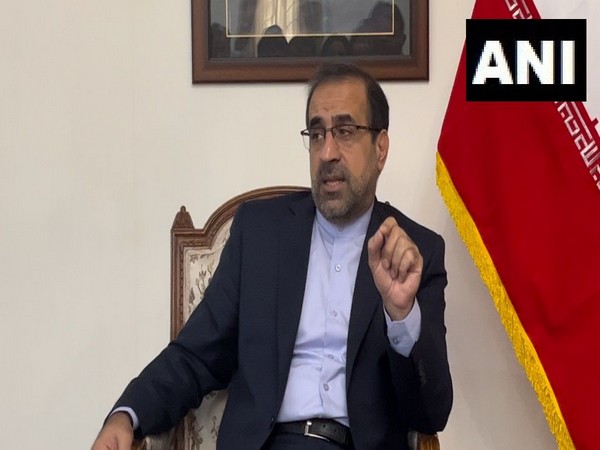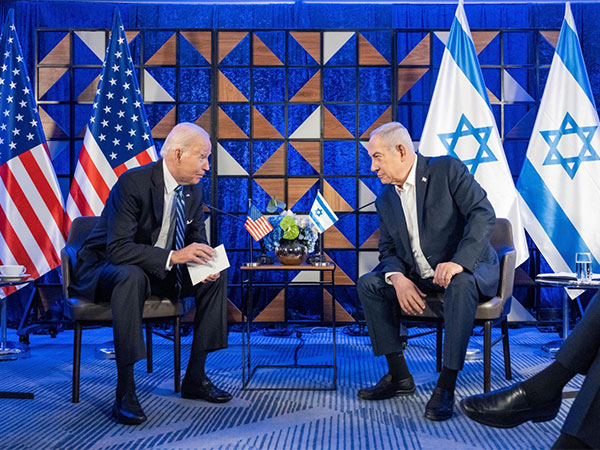
Confidence Building Measures in Conflict Regions: A Prognosis of the Indian Sub-continent

India today has one-sixth of the world’s humanity, and its people aspire for a prosperous and safe future in which they can pursue their dreams without fear. To achieve this, it is imperative to have a congenial external and internal environment, in which the country could make its place in the world affairs and be shielded from global and regional risks thereby progressing towards prosperity and self-reliance. Therefore, the management and the security of our borders are of paramount importance. One is reminded of the famous quote, “God made Land, Man Created Boundaries”.
An overview of India’s security environment makes a very interesting reading. We share a very uneasy neighbourhood and have boundaries with six countries encompassing almost 15,000 kms of extent with almost 10,000 kms of this with our acrimonious neighbours. Towards the West and North we have unsettled borders which make the security of these borders very volatile. Also, towards the East there has always been a potential danger of refugee influx.
Understanding Conflict Building Measures
Nations the world over use Confidence Building Measures (CBMs) as an essential instrument for conflict resolution towards perceived threats. However, the volatile situations such as prevalent in the Indian Sub-Continent as well as the Middle East, the success of CBMs have been widely contested. At times it is extremely difficult to quantify the effect of CBMs as most of these measures have an element of intangibility attached to it. As articulated by Dietelhoff and Ziemermann, we could analyze the impact of CBMs using two important parameters, viz compliance and implementation. These would need a careful analysis whenever we measure the impact of CBMs.
The essence of Confidence Building Measures (CBMs) relates to establishing shared trust, preventing enhancement in conflict/hostilities and finally treading towards positive peace. CBMs can be distinctly differentiated from treaties, accords or agreements since there is no obligation of nations to honour the commitments made and no punitive measures can be taken in case of non-compliance, nor can the issue be taken up with International Courts of Arbitration.
Whenever CBMs are undertaken they have a clearly defined objective of reducing hostilities. CBMs are often classified into two major domains, military and non-military. Some classify them as formal and non-formal. The non-military would encompass a very large canvas such as diplomatic, political, economic, and environmental and so on.
Considering this backdrop, it becomes extremely essential to understand the entire gamut of Confidence Building Measures in zones of conflict especially with Pakistan and China. CBMs are regarded as alternatives to traditional diplomatic initiatives which get impacted due to numerous factors such as trust deficit, security concerns and stalemates in negotiations. The genesis of CBMs can be traced back to the Helsinki final Act, Vienna document, and Stockholm document on confidence and security-building measures. Therefore, while CBMs are not new to the world, rapid advancements in technology and expanding layers of interaction between states have meant that the scope of CBMs has significantly enlarged in present times.
CBMs are varied ways and means that adversarial states can use to reduce tensions and avert the possibility of war. With the nuclearisation of the Indian subcontinent, CBMs have become even more important. These act as regulatory mechanisms for ‘war prevention, war termination and war limitation’, thereby enhancing the peace building mechanisms.
Critical Analysis of CBMs with Pakistan and China
CBMs can be applied in a two-dimensional manner namely the non-nuclear sphere and the nuclear dimension. If we look at India and Pakistan with regard to the nuclear dimension, we see a definite failure to the adherence of norms as evident by both countries significantly expanding their arsenals of nuclear and ballistic missiles weaponry. There is also no agreement or acceptance to designate a nuclear free zone.
India-Pakistan border also remains unsettled and volatile since 1947. Pakistan continues to resort to Proxy war and grey zone warfare. CBMs between the two nations have really made no headway, in spite of instruments such as Tashkent Declaration 1965, Shimla Agreement 1972 and the Lahore Declaration 1999. Pakistan remains emboldened to embark upon its misadventures with Kargil happening in 1999 as well as other major incidents such as Pulwama and Uri. Presently the situation is largely controlled due to communication CBMs which resulted in ceasefire being declared in February 2021 on similar lines as the Ceasefire agreement 2003.
In the non-nuclear dimension, we look at border or territorial issues. India and China have a long-standing border dispute. China maintains its stand as per the 1959 claim line, whereas India has a different perception of the Line of Actual Control. Over the years there have been a series of agreements and CBMs between the two countries. While border differences have not impacted the trade relations, but the lack of settlement has resulted in frequent incursions by the Chinese and have never stabilized the relations between the two countries.
Despite the hostilities on the border following the Galwan incident, both sides have resorted to regular communication which has prevented any further escalation of the conflict. However, resolution of the conflict and understanding each other’s point of view seems to be very far away.
Instruments Used for CBMs
Over the years, large number of military CBMs have been used such as talks at Military Commanders level, having buffer zones, creating a de-limitation zone, hotlines and moving artillery beyond designated firing ranges. The first ever military CBMs were during the 1965 Indo-Pak war where both countries agreed on “Civil Avoidance Strategy”. A joint border management approach by means of a joint military inspection team along the borders and the ceasefire line can also help in reducing the trust deficit.
Military CBMs establish the ‘ground rules for a military exercise to avoid the outbreak of an accidental conflict’. But notifying the other side of military exercises in advance has not been followed many times. For instance, many division level exercises were not pre-notified and even if they were, full details of the same were not provided, as was seen in the Brass-tacks Indian Military Exercise (1987) and the Zarb-e Momin Pakistan Military Exercise (1989).
Military CBMs can therefore be defined as “type of arms control measures” that comprise purposely designed, distinctly cooperative measures intended to help clarify the participating states military intentions, reduce uncertainties about their ‘potentially threatening’ military escalations and constrain their opportunities for surprise attacks or coercive use of force i.e., as “mechanisms aimed at constraining conflict.” It is a process that transforms ‘senior decision-makers’ belief about the nature of threats posed by other states, primarily entailing a shift from a basic assumption of hostile intentions to one of non-hostile intentions.
Apart from military CBM, non-military CBMs such as Track-II diplomacy has also played an important role and is therefore an important tool of CBMs which is applied concurrently to promote mutual understanding of the eco system, to enable conflict resolution in both the kinetic and nuclear domain, for instance, the Neemrana dialogues and Chaophraya Track Two dialogues between India and Pakistan. On account of these measures, we saw that both India and Pakistan never resorted in any of the wars to target each other’s nuclear facilities and therefore sanctity of red lines were maintained.
In confidence building, CBMs can work at various levels: People to people contacts, NGOs, increased trade and military cooperation and cultural exchange. Civil society plays a vital role in influencing and shaping how individuals, communities, institutions, and states behave with each other. CBMs promoting people-to-people contacts play a significant role in developing an environment for cordial relations and conflict resolution.
Conclusion
It must not be believed that CBMs alone can lead to a resolution of conflicts and therefore should not be viewed in isolation. It is imperative that the CBMs are backed up by policy documents and bi-lateral agreements which focus on compliance. Past records suggest that both in the case of Pakistan and China, we have been able to achieve only partial success in conflict resolution. Notwithstanding this, our endeavour should remain to use CBMs as an important instrument of state craft to enable responsible state behavior and ensure regional stability in the conflict zones.
The major limitations emanate from the overpowering populist pressure or hawkish mind set in countries. The voices of reason and moderation which seldom get ascendancy over populist crush, the other slogans are conveniently subdued on the slightest pretext. It is quite difficult and demanding on both sides to bring about a gradual change in how we perceive issues. Changing the traditional outlook embedded in an embittered past is a tall order and would call for a massive overhaul of our mind-set. It is therefore evident that unless a multi-faceted approach is adopted taking into account a “Whole of Nation” approach we are likely to remain in a dilemma we are in today.
*************
Disclaimer
The opinions expressed in this article are the author’s own and do not reflect the views of Chanakya Forum. All information provided in this article including timeliness, completeness, accuracy, suitability or validity of information referenced therein, is the sole responsibility of the author. www.chanakyaforum.com does not assume any responsibility for the same.
Chanakya Forum is now on . Click here to join our channel (@ChanakyaForum) and stay updated with the latest headlines and articles.
Important
We work round the clock to bring you the finest articles and updates from around the world. There is a team that works tirelessly to ensure that you have a seamless reading experience. But all this costs money. Please support us so that we keep doing what we do best. Happy Reading
Support Us




















POST COMMENTS (1)
Kalidan Singh